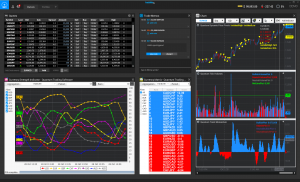When most people think about life insurance, they are instinctively turned off. Some people hate term policy because most people outlive their term. Others hate permanent insurance because of its high cost. The majority of Americans just hate the process of a salesman soliciting products that they do not believe in. While there are differences between term and permanent life insurance policies that could benefit different people based on their circumstances, this article is just to educate people on whole life permanent insurance.
![]()
Many people believe that life insurance is just a tool to help their families in the event of premature death. All the premiums paid toward a policy cannot be used until death. However, with a whole life insurance policy, the policy accrues cash value and can be used anytime. This is a key component that many salesman fails to educate their potential clients on. The cash value can be used at any time for any reason. Just like the death benefit, the cash value can be borrowed tax free, although the interest on the loan cannot be tax deductible. Yes, the cash value is a loan that is borrowed against your policy, however, it does not need to be paid back. Once death occurs, the death benefit will be used to pay back the loan, and the remaining balance will be paid to the beneficiaries.
Typically, I like to explain permanent insurance by showing two different bank accounts, A and B. Bank account A is the death benefit, or the value of insurance that you purchased. Bank account B is the cash value that you can use at any time. You are guaranteed bank account A no matter what happens, but you just have to wait for a death in order to collect on bank account A. If you need money prematurely, you can access bank account B and use its funds immediately. The guaranteed amount in account A will be used to repay any outstanding loans in account B at death.

Cash value allows policy owners to have an extra security blanket in case an emergency comes up, or if they are short on cash during the later years of their retirement. If you think life insurance is just something you pay into and get nothing back, you are wrong. A whole life insurance policy is designed to grow over time. In the beginning, you will not be able to access as much money as you paid into the policy, however, after a long time, your cash value will be significantly more than the total premium outlay. The whole life insurance policy is designed to be a risk management instrument with a long term investment strategy attached as an added benefit. Most whole life insurance policies will give you more cash value than total premiums paid after about 15 years. Depending on the company, your 30 year rate of return can vary greatly. However, you have to realize that a whole life insurance policy is supposed to be a life insurance policy first. Any investment incentive is just an added bonus that comes with great planning.
As a matter of fact,according to a report average cost of life insurance per month for one person whose age falls between 18 and 70 can expect to pay an average $67.88 a month for a $250,000 life insurance policy. Of course, this cost varies significantly depending on which end of those ages you are, your lifestyle, and your overall health.

There are many things to consider when deciding which life insurance policy is right for you. For that reason, it is imperative to find the right company and the right agent to help you assess your needs. However, understand that life insurance is not just something that the rich get, but is affordable to even lower income individuals. Be extremely careful on your quest for life insurance. Some companies specifically push either term or whole life, so their agents will try and talk you out of what you really need. You should shop around with different insurance companies to see the different things each agent tells you. Educate yourselves on the products and services that you are going to purchase before signing any applications.



